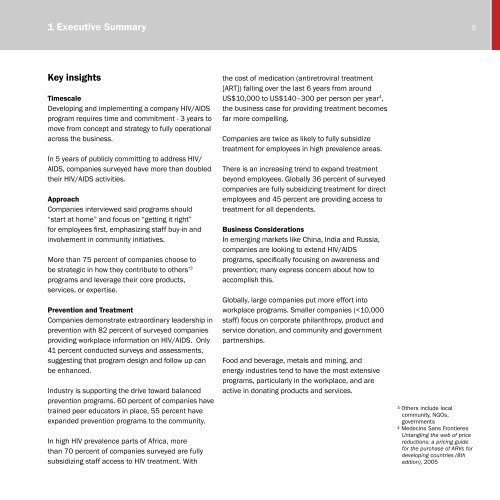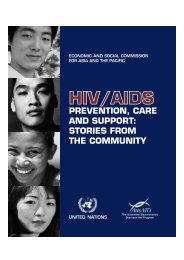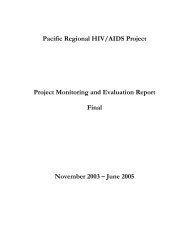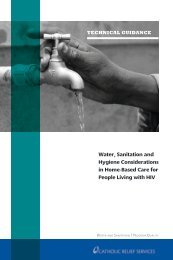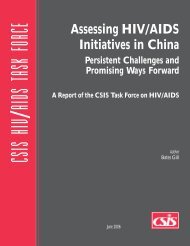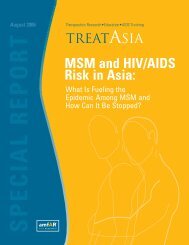The State of Business and HIV/AIDS (2006) - Booz Allen Hamilton
The State of Business and HIV/AIDS (2006) - Booz Allen Hamilton
The State of Business and HIV/AIDS (2006) - Booz Allen Hamilton
Create successful ePaper yourself
Turn your PDF publications into a flip-book with our unique Google optimized e-Paper software.
1 Executive Summary<br />
5<br />
Key insights<br />
Timescale<br />
Developing <strong>and</strong> implementing a company <strong>HIV</strong>/<strong>AIDS</strong><br />
program requires time <strong>and</strong> commitment - 3 years to<br />
move from concept <strong>and</strong> strategy to fully operational<br />
across the business.<br />
In 5 years <strong>of</strong> publicly committing to address <strong>HIV</strong>/<br />
<strong>AIDS</strong>, companies surveyed have more than doubled<br />
their <strong>HIV</strong>/<strong>AIDS</strong> activities.<br />
Approach<br />
Companies interviewed said programs should<br />
“start at home” <strong>and</strong> focus on “getting it right”<br />
for employees first, emphasizing staff buy-in <strong>and</strong><br />
involvement in community initiatives.<br />
More than 75 percent <strong>of</strong> companies choose to<br />
be strategic in how they contribute to others’ 3<br />
programs <strong>and</strong> leverage their core products,<br />
services, or expertise.<br />
Prevention <strong>and</strong> Treatment<br />
Companies demonstrate extraordinary leadership in<br />
prevention with 82 percent <strong>of</strong> surveyed companies<br />
providing workplace information on <strong>HIV</strong>/<strong>AIDS</strong>. Only<br />
41 percent conducted surveys <strong>and</strong> assessments,<br />
suggesting that program design <strong>and</strong> follow up can<br />
be enhanced.<br />
Industry is supporting the drive toward balanced<br />
prevention programs. 60 percent <strong>of</strong> companies have<br />
trained peer educators in place, 55 percent have<br />
exp<strong>and</strong>ed prevention programs to the community.<br />
In high <strong>HIV</strong> prevalence parts <strong>of</strong> Africa, more<br />
than 70 percent <strong>of</strong> companies surveyed are fully<br />
subsidizing staff access to <strong>HIV</strong> treatment. With<br />
the cost <strong>of</strong> medication (antiretroviral treatment<br />
[ART]) falling over the last 6 years from around<br />
US$10,000 to US$140–300 per person per year 4 ,<br />
the business case for providing treatment becomes<br />
far more compelling.<br />
Companies are twice as likely to fully subsidize<br />
treatment for employees in high prevalence areas.<br />
<strong>The</strong>re is an increasing trend to exp<strong>and</strong> treatment<br />
beyond employees. Globally 36 percent <strong>of</strong> surveyed<br />
companies are fully subsidizing treatment for direct<br />
employees <strong>and</strong> 45 percent are providing access to<br />
treatment for all dependents.<br />
<strong>Business</strong> Considerations<br />
In emerging markets like China, India <strong>and</strong> Russia,<br />
companies are looking to extend <strong>HIV</strong>/<strong>AIDS</strong><br />
programs, specifically focusing on awareness <strong>and</strong><br />
prevention; many express concern about how to<br />
accomplish this.<br />
Globally, large companies put more effort into<br />
workplace programs. Smaller companies (


